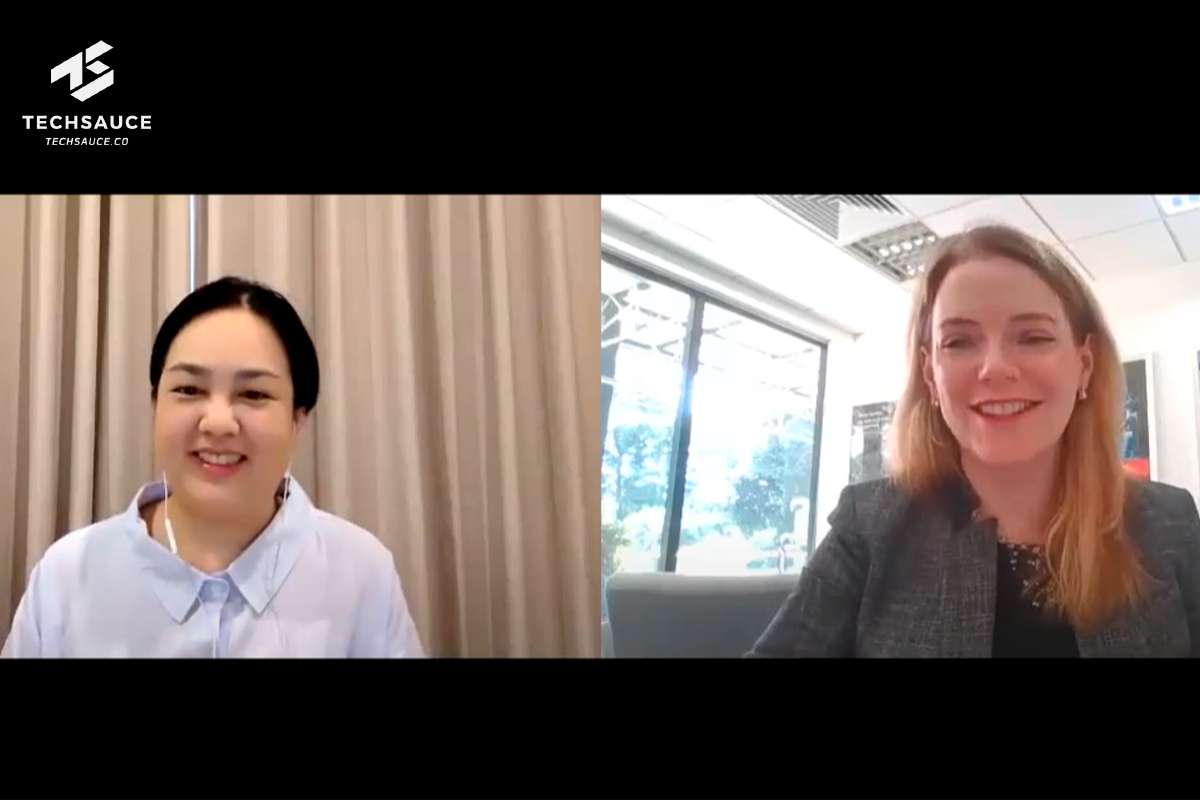The Secret to Leveraging UX
Where are corporates doing wrong when it comes to leveraging UX? In our latest Techsauce Global Podcast, Techsauce Global Content Editor Poupée Chaowarat Yongjiranon talks to Aldrich Huang, CEO & co-founder of UXTesting.io and organizer of Savvy UX Summit on the secret to leveraging UX. Huang also gives helpful advice to those looking to have a career in UX.
 Huang has been at the forefront of UX development around the world. As the CEO and co-founder of UXTesting.io based in Silicon Valley with business in Taiwan and Europe and Singapore, he has helped over 100 large enterprises optimize their user experience of products and services around the world. He also is the organizer of Savvy UX Summit, one of the top ten UX summits in the world.
Huang has been at the forefront of UX development around the world. As the CEO and co-founder of UXTesting.io based in Silicon Valley with business in Taiwan and Europe and Singapore, he has helped over 100 large enterprises optimize their user experience of products and services around the world. He also is the organizer of Savvy UX Summit, one of the top ten UX summits in the world.
Equipped with years of experience working in the fields of law, business development, and user experience strategy, Huang gives Techsauce insight on what corporates may be doing wrong and how anyone can be a UX professional.
Do you really know the difference between UX and UI?
For the true leveraging of UX, Huang says both corporates and those looking to be UX practitioners need to know the difference between UX (user experience) and UI (user interface). Over the past few years Huang has seen more and more corporates opening head counts for UX practitioners that include positions such as UX researchers and UX designers. However progress in developing UX is stalled with some confusion over what is the difference between UX and UI. When advertising for a UX position, sometimes the job description is more about UI and many companies may think UX means better than UI.
So what is the difference? Giving a clear simple explanation, Huang says UI is what you look like. It is the shade of color of a bottle or a website. If it is about how colorful or fancy something is, it is UI.
UX or user experience involves elements that users experience. It is how the user feels.
“UI is only what you see. UX is about whether you are happy and how do you feel?”
This does not mean that there has not been progress. Huang says there has been much development as most decision makers or high level people in companies want to improve their UX. It is just that when hiring UX/UI professionals, more focus is often placed on how fancy a design is. They often overlook how users interact with products and how they feel. Just because you are in UI, it does not mean that you can provide the best experience for users.
UX Trends Corporates Should Focus on in 2022
Huang says there are three key trends corporates should watch out for in 2022.
Password-less Login
Huang says a recent survey showed 57% of people forget their passwords. 65% feel they need to write their passwords down or use passwords that are easy to remember. With password-less login conversion rate of visitors to users or users into customers will improve. Corporates looking to do business in Europe should follow the General Data Protection Regulation (GDPR) when it comes to collecting user data. Many companies still do not do this and risk facing a huge fine. So the challenge is to find a way to abide by the GDPR and at the same time have a fluent sign-in process.
Air Gestures
After COVID-19, people do not want to touch surfaces, whether it be buttons or a screen. So air gestures are becoming more and more important. More and more devices such as desktops, mobile devices, and websites will involve more interaction via air gestures. More focus will be on accurate air gesture detection. Devices and AI need more development to do more than just take selfies. It is about making sure your machine learning is smarter because if you do not have the right accuracy for air gestures, users will have bad experiences, leading them to stop using your service.
Inclusive Designs
Huang says most of his clients often make the mistake of making the hypothesis that all users will use their service. However they mostly focus on just one group of users instead of servicing everyone. For example, a website should be accessible to all types of users including those who depend on audio to navigate the site. From Huang’s observation most commercial sites do not have an audio function for these users.
“If we can really think about servicing all kinds of people to interact with our product, that will be better. So what can change that? I think the answer is very simple, just work on physically, cognitively, and emotionally designs for everybody.”
The Role of UX in DeFi Adoption
Huang says that even though crypto and NFTs are super famous, there has not been a lot of thought about consumer user experience in the field. The focus has simply been on structure engineering. This is because most founders or buyers mostly have an engineering background and do not think of user experience. Crypto sites are often built from an engineer’s point of view and are not user friendly. After purchasing crypto himself, Huang said he felt confused, frustrated, and sometimes nervous when using crypto apps because he barely understood the core features of the app. Users are concerned about the authenticity of coins, onboarding processing, and transparency.
“So it is going to be a long road before user experience can be improved.”
Huang says the first thing engineers and crypto companies need to realize is if you want the price of your crypto to increase, you need more demand. You need people to buy the coins. So how do you get more people? You can provide a better experience and work on user flow so that it is friendly and easy to use. All information is also transparent.
For example, if you have a long description of the terms of privacy, normal people will not understand. However, if you use simple language to highlight the key points that are anticipated to be concerns of users, you make the experience easier to understand and users will have more confidence to use your service.
Cryptocurrency is still in its early stages, so the lack of regulation does not require transparency, but if you start working on it, Huang says you can definitely attract more people to your currency and put trust in your NFT.
How will the metaverse impact UX designers?
Personally Huang says the metaverse is definitely the future. He says the site is not concerned about how quickly a user completes their goal. It is more concerned with whether the user is immersed enough to pursue a goal in the first place.
Designing for the metaverse means designing for an entirely new immersive world. Designers will have to broaden their skills to include a host of new disciplines. It is now a very good time for designers. You can discover. You can even build up your design system for a design system and also discipline from metaverse. However it does not just happen within a day. You need to get involved with any metaverse project first to build up your own design principles and systems.
“Now it is a very good time for designers. You can discover. You can even build up your design system for a design system and also discipline from metaverse.”
Everyone can be a UX practitioner
For those seeking to become UX designers, whether as a fresh graduate of someone switching from another industry, Huang says the first thing you need to do is seek a mentor. Right now the world does not have many schools that provide UX diplomas. So it is about finding someone who is already working in the industry. It is about learning what the industry needs and what skills are actually needed.
Nowadays Huang says it is easy to become a UX practitioner. Huang actually met one researcher who switched careers after being a lawyer for some time.
“Everybody is qualified to be a UX practitioner.”
The second thing you need to do is build up your portfolio. Having received many applications over the years, Huang says students are often confused in how to prepare their portfolios. They usually send him their UI portfolios and prototypes such as product designs. This is not enough for Huang. He says applicants need to understand the story of a company and what problem needs to be solved. You need to design your own UX issue and have enough information or else there is not enough to verify whether you are qualified to be a UX professional or not.
You need to consider insight from all stakeholders, both internal and external to see if the design you have created can solve their problems.
Great Potential in SEA
Having worked with many clients in Southeast Asia, Huang says the most common problem faced by companies is the decision-makers or high level people still do not understand the value of UX. So there is not a lot of investment in UX. There is still a misunderstanding of what UX and UI are.
However slowly the UX community is booming in Southeast Asia, including Thailand. Huang says there is a large number of practitioners in Thailand, but many of his friends say their supervisors do not invest in UX. Instead they want to build a fancier UI to solve a UX problem. This is totally wrong. So as the community is booming, there is still a need to educate corporations to understand the true value of UX.
You can listen to the entire conversations by checking out Techsauce Global Podcasts.
ลงทะเบียนเข้าสู่ระบบ เพื่ออ่านบทความฟรีไม่จำกัด











